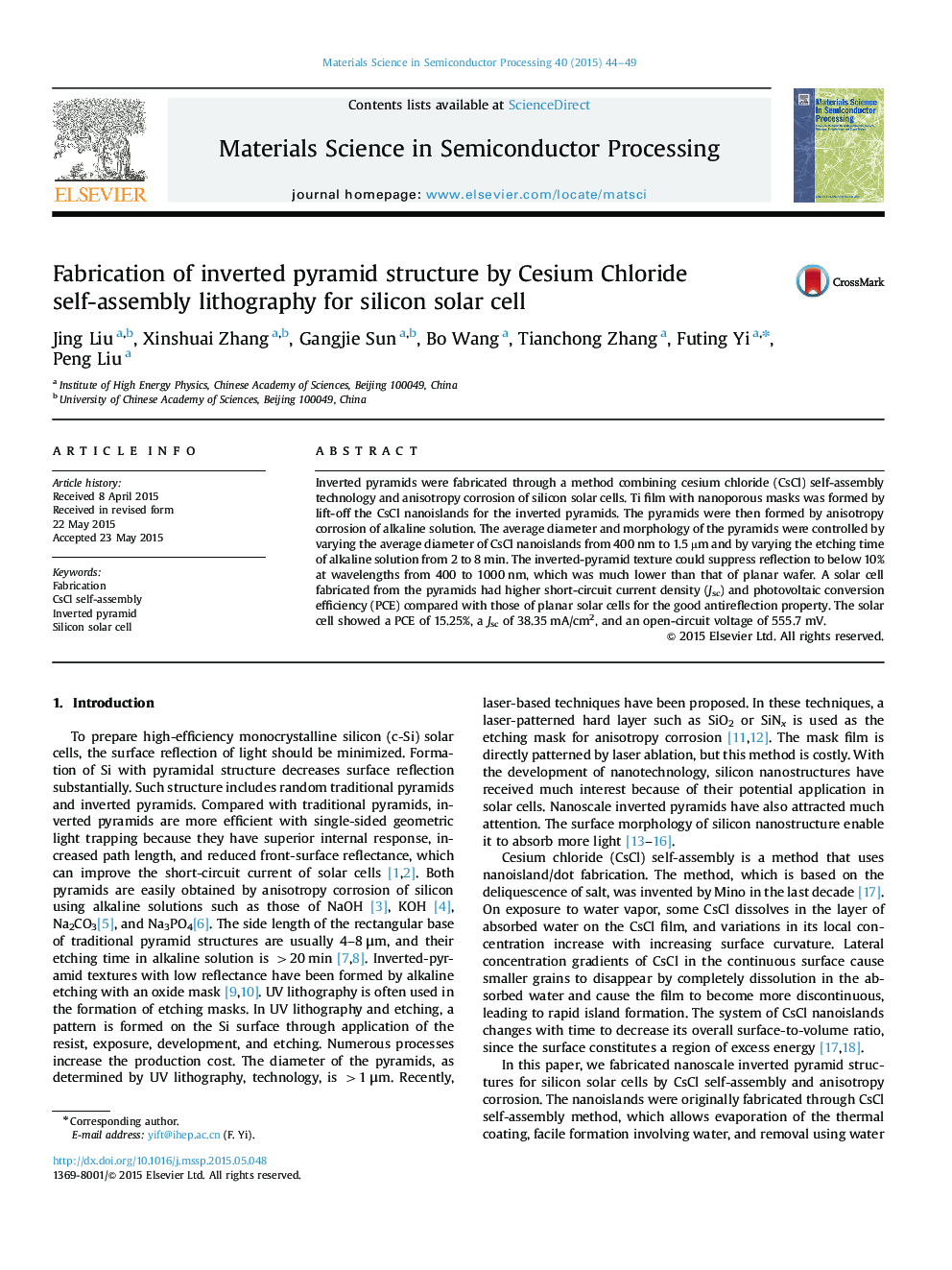| Article ID | Journal | Published Year | Pages | File Type |
|---|---|---|---|---|
| 7118634 | Materials Science in Semiconductor Processing | 2015 | 6 Pages |
Abstract
Inverted pyramids were fabricated through a method combining cesium chloride (CsCl) self-assembly technology and anisotropy corrosion of silicon solar cells. Ti film with nanoporous masks was formed by lift-off the CsCl nanoislands for the inverted pyramids. The pyramids were then formed by anisotropy corrosion of alkaline solution. The average diameter and morphology of the pyramids were controlled by varying the average diameter of CsCl nanoislands from 400 nm to 1.5 µm and by varying the etching time of alkaline solution from 2 to 8 min. The inverted-pyramid texture could suppress reflection to below 10% at wavelengths from 400 to 1000 nm, which was much lower than that of planar wafer. A solar cell fabricated from the pyramids had higher short-circuit current density (Jsc) and photovoltaic conversion efficiency (PCE) compared with those of planar solar cells for the good antireflection property. The solar cell showed a PCE of 15.25%, a Jsc of 38.35 mA/cm2, and an open-circuit voltage of 555.7 mV.
Related Topics
Physical Sciences and Engineering
Engineering
Electrical and Electronic Engineering
Authors
Jing Liu, Xinshuai Zhang, Gangjie Sun, Bo Wang, Tianchong Zhang, Futing Yi, Peng Liu,
